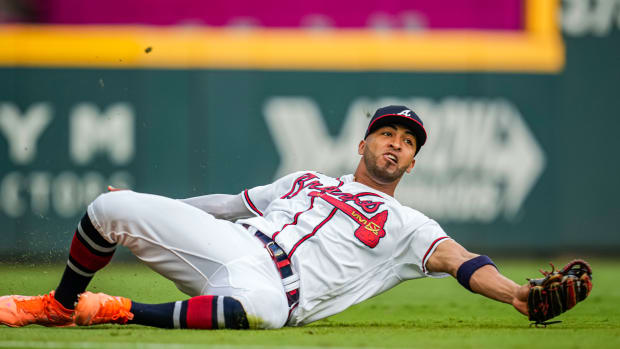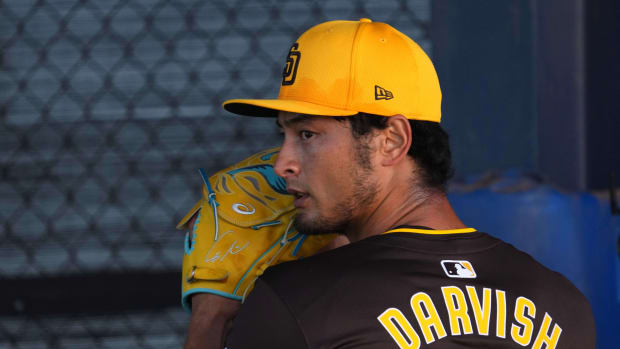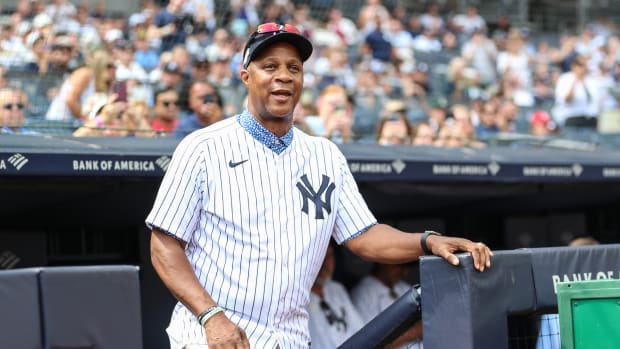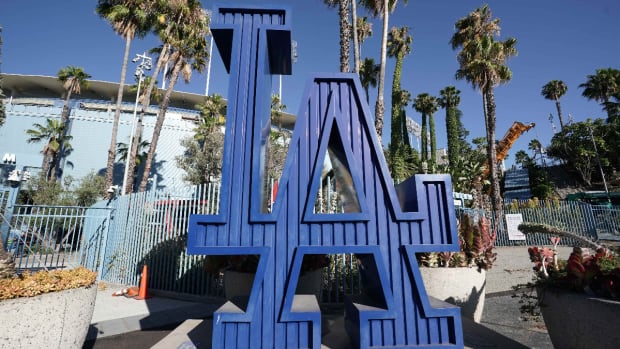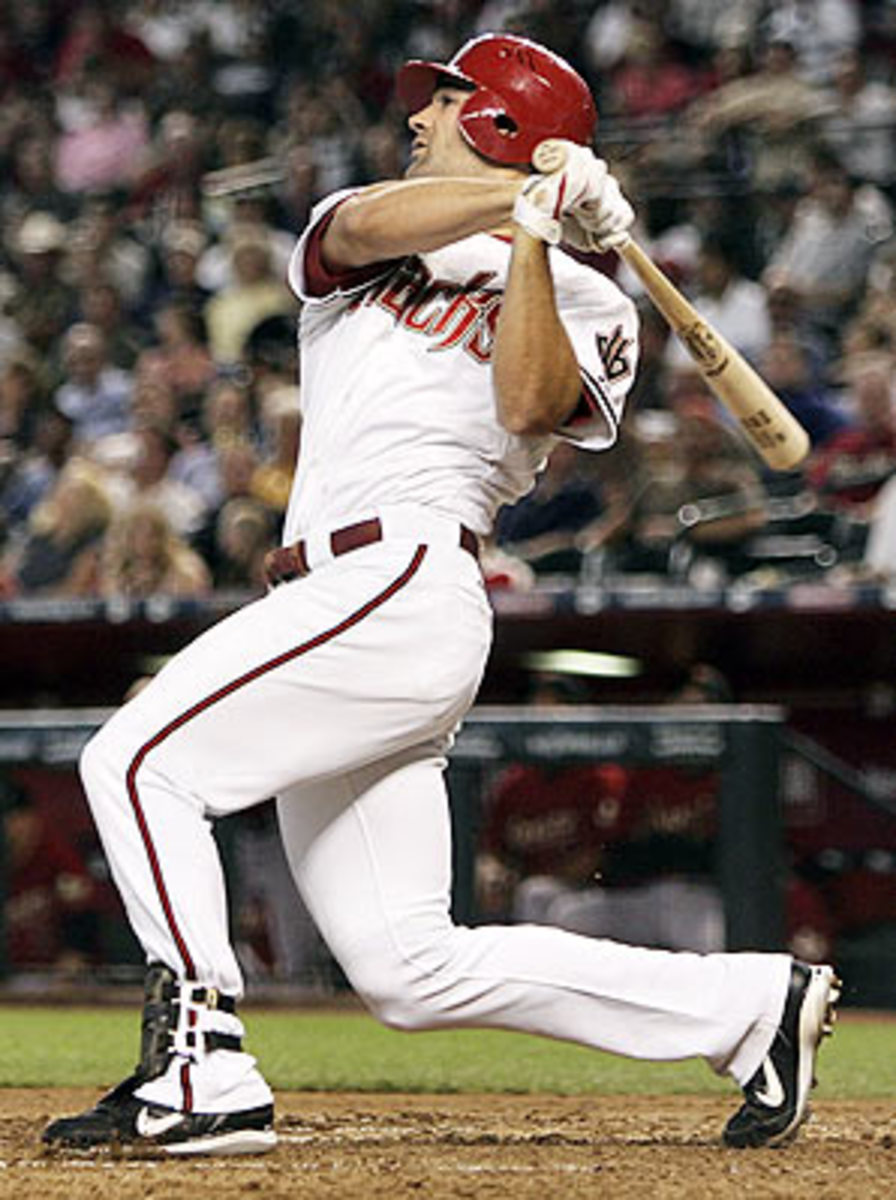
Unconventional Wisdom: Reality check
1) The Diamondbacks. This isn't the 2007 D'backs , the team that won the NL West with a negative run differential on the strength of an unhittable bullpen. That bullpen is basically still together -- with Chad Qualls replacing Jose Valverde -- and still effective (fifth in the NL in WXRL). Those relievers back up the best starter in the NL, Brandon Webb, and an above-average rotation.
This year's version of the D'backs can also score: to the tune of a .278 EqA and nearly six runs per game, a run and a half more than the '07 team tallied. The young hitters who failed to produce last year and contributed to the offensive stall have all improved, including Conor Jackson (.338 EqA, up from .277), Chris Young (.269, .253) and Stephen Drew (.272, .236). Justin Upton, overmatched in a late-season call-up, has hit .330/.376/.557 so far this year. The Diamondbacks are also second in the majors in runs, with 165. They have the best run differential and best third-order record in the game. This is no fluke -- the Diamondbacks are real, on their way back to 90 or more wins and the postseason. Last year's team arrived early on the strength of a surprising bullpen. This team is one that will be among the best in the league for years to come.
2) The Mariners. The AL version of the Diamondbacks a year ago, the Mariners didn't come into 2008 with the kind of offensive upside that the Snakes have, which is the biggest difference between the two teams. The M's have a .258 EqA and 127 runs scored, about a run a game less than what the D'backs are doing. (Note: The teams' home parks make for disparate run environments). The age of the team's position players makes it hard to project a big bounce --players such as Ichiro Suzuki and Kenji Johjima will move toward their career averages, but there's no upside in the lineup at all. This is a below-average offense.
The bullpen isn't reprising its 2007 work, which was to be expected. Set aside J.J. Putz's injury; Mariners relievers' run prevention last year was disproportionate to their underlying performances. They could pitch exactly as well as they did last year -- and they haven't -- and still allow more runs. Adding Erik Bedard and Carlos Silva made the rotation better, but all that did was cover the ground that the pen would be giving back. This was a .500 team last year, looked like a .500 team over the winter and into the spring, and is a .500 team now. Their 13-15 record is real, and they're not going to be the division contender that so many people expected them to be.
3). Casey Kotchman. Kotchman lost so much development time to injuries and illness that he fell below and then off the radar while advancing ever so slowly through the Angels' system. He's 25 now, but with the reps of a 23-year-old. Last year, finally healthy and finally permitted to play, Kotchman showed a glimpse of what he could do, with 37 doubles in 443 at-bats and more walks (53) than strikeouts (43). This year he has turned up the contact rate and power, striking out just five times in 96 at-bats, and posting an isolated power of .247. He's in the top five in the AL in EqA and RARP, and he pairs that offense with an above-average glove. The power he has shown so far is a little out of his range, the product of a fluky split in his homers and doubles totals, but the batting average and OBP aren't. Look for Kotchman to hit .320/.410/.500 this season and continue being the Angels' best player.
4) Matt Morris. Sometimes, a slump is just a slump, but sometimes it's the end. Morris' peripherals had been deteriorating for years, with single-digit Stuff scores stretching back to 2004. The slippage in his skill set went unnoticed largely because Morris pitched in front of such good defenses in St. Louis. His ERAs stayed below the league average for the most part and he provided innings because the many balls he allowed into play were gobbled up for outs, and the Cards turned double plays behind him. When he moved to San Francisco he survived for a year by nibbling a bit more, as his walk rate nearly doubled over 2005. In '07 he allowed 162 hits in 136 2/3 innings for the Giants, who played terrible defense, before they traded him to Pittsburgh, where his decline continued.
This year Morris, 33, struck out nine men and walked seven in five starts, allowing at least four runs and six hits each time he took the mound. He gave up six homers in just 22 1/3 innings and was released over the weekend with a 9.67 ERA. The decline of a pitcher who works on the margins -- as Morris did for a number of years -- can be steep and ugly. That's what happened here. Morris isn't just allowing contact and being let down by his defense, he's being hit so hard that no defense can save him. There's always a chance that he could help a team just by taking the ball every fifth day so that a young pitcher doesn't have to, but the chance that Morris will even be average again is slim.
The Pirates, by the way, paid about $13.5 million and some fraction of Rajai Davis' career for 16 starts in which they went 5-11 -- 84 1/3 innings in which Morris allowed 75 runs. New GM Neal Huntington really doesn't have a high bar to clear to achieve relative improvement.
5) Parity. The last few years have seen the spread between the best and worst teams in the game narrow considerably, as natural cycles of aging and unnatural wealth-redistribution mechanisms serve to bring the extremes toward the middle. Throw in a National League in which three quarters of the teams can see themselves as one trade-deadline deal away from playing in October, and you have 1980s-style parity. The Diamondbacks and Cubs have so far separated themselves at the top, while the Nationals and Rangers have yet to reach 10 wins. Everyone else, from No. 3 to No. 28, is separated by just 6½ games.
That's not a fluke: MLB has spent most of the 2000s working toward NFL-style competitive balance, and that's what it now has. Whether that's best for baseball remains to be seen -- the game is at its best when great teams fight out great races in the regular season -- but it does provide a heaping helping of hope and faith.
NOTE: All stats are through April 28.
1) The Marlins. Their lead in the NL East is a mirage created by a 6-2 record in one-run games. The Marlins have been outscored by three runs this season, and currently have the NL's biggest positive gap between their record and their third-order record, the latter of which is a better indicator of underlying performance. Their offense has been productive thanks to its balance -- just one player, Cody Ross, has been substantially below replacement level, and six regulars have at least a .280 EqA. At that, the combination of being next-to-last in walks drawn and strikeouts probably bodes ill for a team already carrying an unimpressive .325 OBP.
Keep in mind that the offense is the best thing about the Marlins. Their defense has improved from wretched to average, at least by Defensive Efficiency. Looking around, they have a center fielder at shortstop, a third baseman at second, a second baseman in center half the time, and a DH in left field, so they're more likely to drift back towards the bottom of the league than do anything else. That's a problem, because the pitching staff -- next-to-last in the NL in strikeouts -- needs all the help it can get. Scott Olsen's 2.03 ERA is a mirage; he's walked as many men (13) as he's struck out, and is getting by on an absurdly low .187 BABIP for a team that allows about 30 percent of the balls in play to become baserunners. He's gotten all of Andrew Miller's good fortune; the prize of the winter's big trade with the Tigers is being let down to the tune of a .450 BABIP. Those two numbers will move toward each other.
The combination of a soft early schedule (14 games against the Nationals, Pirates, and Astros, in which they went 9-5) and some luck in close games (3-0 in extra innings to go with that 6-2 record in one-run affairs) has served to make the Marlins April's mirage. Not only will they be evicted from first place soon enough, they could plummet rapidly come the end of the next month, which features a 10-game road trip through New York, Philadelphia, and Atlanta. At least there aren't a lot of people who will be disappointed when it happens.
2) The Cardinals. Just a hair behind the Cubs in what was expected to be a rebuilding year, the Cardinals are doing it by throwing strikes. No NL pitching staff has walked fewer men than their 74, leading to the third-fewest runs allowed and second-best ERA in the league. Without overpowering stuff -- 165 strikeouts, a mere 11th in the league -- Cards pitchers have been pounding the strike zone and taking their chances.
They're winning this game of chance thanks to a strangely low home-run rate: just 19 allowed, third in the NL, in 243 1/3 innings. That number almost has to go up when you look at the pitchers on the staff. Just to pick on one guy, Kyle Lohse has thrown 34 1/3 innings without yielding a long ball. He has an ERA of 2.36 despite a 14/8 K/BB in that time. His G/F of 1.80 is out of whack with his career mark of 1.04. Lohse usually gives up a homer every seven or eight innings. Now, it's possible this is a mid-career reinvention; it's more likely that it's 30 strange innings, and that he'll go back to being Kyle Lohse shortly. The rest of the staff is similar -- Braden Looper has allowed one homer in 26 2/3 innings; Ryan Franklin, of all people, none in 13 1/3 innings; Brad Thompson, one in 17 1/3 innings. These rates are unsustainable.
There's a reason beyond the pitching staff for these figures. The Cards have played the weakest schedule in baseball. It's weak largely because it's been populated by teams that can't hit. The Cards have played seven games against the Giants (.365 SLG, 14th in NL; 14 HR, last); six against the Astros (.410 SLG, seventh in NL); five against the Brewers (.385, 11th; almost all innings pitched by RHPs) and nine others against the Nationals, Rockies, Pirates, and Reds. The Cardinals have played 75 percent of their schedule against teams with below-average slugging percentages. When that changes, they'll allow more home runs, more runs, and slip away from the top of the NL Central.
3) The Tigers. Just about every team, even very good teams, goes haywire for a couple of weeks. The Tigers just happened to go haywire in the first two weeks of the season, causing a staggering amount of panic. Since their 2-10, 2.8 R/G start, the Tigers are 9-5 and scoring seven runs per contest. Their offense is fine, and with Curtis Granderson back in the fold, they'll score more than enough runs to contend.
Whether they win or not is going to be up to the pitching staff, which has been terrible. The Tigers are 13th in the AL in walks allowed with 119. Of their five Opening Day rotation starters, three have walked more men than they've struck out, and Justin Verlander can see the line (20/18 K/BB). Two relievers, Denny Bautista (7/9 K/BB) and Todd Jones (4/4 K/BB) are in the same boat while sporting excellent ERAs. There are no substantial solutions available from within the organization, and no high-value trade chits to move to bring in any help. Still, it seems incongruous that Verlander and Jeremy Bonderman would both continue to allow six runs per nine innings and a 1:1 K/BB all year long. When that changes, the Tigers will leapfrog the pretenders in the AL Central and be left battling the Indians who have issues of their own for the division crown.
4) Bronson Arroyo. This looked more insightful before Arroyo threw a quality start against the Cardinals Monday night in a 4-3 win. With that game in hand, you're looking at a pitcher with a 29/12 K/BB in 31 innings, excellent numbers. Once again, Arroyo is struggling with the long ball, allowing seven so far in his six starts (one last night). Even that is largely the result of one terrible day against the Phillies back on April 7, with four homers allowed to the 27 batters he faced.
Arroyo's real problem has been that old bugaboo, BABIP. The Reds aren't a good defensive team by any stretch -- they rank 16th in Defensive Efficiency at .706 -- but when Arroyo has been on the mound, balls have found more holes than usual. Arroyo has allowed 43 hits despite striking out nearly a man an inning, largely thanks to a BABIP of .375. Even if that reverts to his career high of .313, set last year, it will bring his ERA down, and the rest of his numbers make him a good mid-rotation starter, an asset for a Reds team that can be a factor in the wild-card chase.
5) Ryan Dempster. The last time Dempster was a starter, he walked 22 men in 33 2/3 innings and was pulled from the rotation with a 5.35 ERA in six starts. The time before that, he had an ERA of 6.54. Before that, 5.38. So when you look at Dempster and his 2.90 ERA and 3-0 record, remember that he hasn't been successful as a starting pitcher since 2000.
While a good story, Dempster's low ERA is more about a .190 BABIP than anything else. He has a 21/14 K/BB in 31 innings, which won't get you very far. However, as with Kyle Lohse, a good defense and a new affinity for groundballs (2.17 G/F, by far his highest as a starter) are keeping the hits and extra-base hits (four) off the board. Dempster is due for a correction shortly.
Perhaps the most interesting group of early-season stories are the ones we don't know quite what to do with. They defy categorization, so we'll just take a look at the pros and cons and sit back and see what plays out.NOTE: All stats through April 30.
1) The A's. A pair of losses to end April takes little away from the A's, who nonetheless sit at 17-12, one game out in the AL West with the best run differential and best third-order record in the AL. They're doing it with a low-profile roster consisting of the players they've developed in the past four years, an assortment of castoffs from other organizations, and some productive players from last winter's big trades.
Now, not to disparage that cast, but it's hard to figure how the group is 17-12 with a great run differential. The A's are fourth in the AL in runs scored, in a pitchers' park, while placing 11th in batting average, sixth in OBP, and 12th in slugging. They've hit 15 home runs, just four more than Chase Utley has. They do lead the AL in walks drawn, which without power, speed, or average makes them something of a one-trick pony with a so-so trick. The A's have scored 14 runs more than their offensive elements would predict, thanks in part to an unholy .309/.407/.431 line with runners in scoring position (Rob Neyer was the first to point this out, on Tuesday). That's not going to be sustained, and even the addition of Frank Thomas and eventual additions of Eric Chavez and Carlos Gonzalez seem unlikely to make enough of a difference. The A's don't have a good offense.
The pitching is a bit less suspect, although still a bit above its head. The return on Dan Harenalready looks strong, as Greg Smith and Dana Eveland have combined for 11 starts of 3.21 ERA ball, averaging six innings an outing. The bullpen has been lights out, with Andrew Brown and Santiago Casilla exiting April having allowed one run, unearned, between them. The A's are in the top three in the AL in strikeouts, walks allowed (the good way), and home runs allowed, which is a very good way to win baseball games. Even if some of the relievers revert to form, the A's can keep enough runs on the board to be competitive.
Can they do better than that? What's interesting is that the A's have gotten two starts from Rich Harden, as well as nothing from Chavez or Gonzalez yet. Jack Cust has a .265 SLG. Their No. 5 hitter, Emil Brown, has a .299 OBP. There is room for improvement, enough to make an argument that with the Angels still down two starting pitchers and hamstringing themselves in the outfield, and the Mariners just not that good, the A's could very well hang around the top of the division all year long. If a rebuilding year leads to 84 wins and contention, that's a good story and a feather in the cap of the forgotten GM, Billy Beane.
2) The Rays. While nodding politely in the general direction of PECOTA, I refrained from going overboard about the Rays this spring. The predictions of above-.500 records seemed exuberant given that the team allowed 944 runs in 2007. That's nine hundred and forty-four. Giving them full credit for improved pitching and defense, I slotted them for 850 runs allowed and a 77-85 mark, and thought I was being pretty generous. It is hard, damned hard, to lop 150 or more runs off across two seasons.
Well, now it's May 1, and the Rays are on pace to allow 654 runs. Some of that is a leaguewide downturn in offense, but more of it is defense. In 2007 the Rays had the worst Defensive Efficiency in the 49 years in our database, but they now have the third-best defense in baseball by that metric this time around. That points to a concerted effort to upgrade the defense, to make personnel decisions based on getting more outs on balls in play. That's paid off in allowing nearly two runs a game less in 2008.
Give the pitchers some credit, too, especially an improved bullpen. The Rays are fifth in the AL in walks allowed and second in home runs allowed. The pen, such a nightmare in 2008, has a 2.52 ERA in '08. Every reliever with at least four appearances has an ERA of 3.55 or better save for Al Reyes, who found his way to the DL after seven appearances and a 9.00 mark. All of these numbers have been compiled without Scott Kazmir, due back this weekend from a sore elbow that cost him a month.
Now, it's possible that the Rays will continue to channel the Angels and catch everything, but let's consider just how impressive a feat it would be. Just to allow 744 runs, the Rays would have to lop 200 runs off of their 2007 mark. Jason Paré looked it up and found just 15 teams that have allowed 200 fewer runs from one season to the next since 1959:
Let's see... the 1997 Tigers turned over most of their pitching staff after a disastrous season. The 1998 Padres imported Kevin Brown, got better seasons from the carryover starters, and also rebuilt the bullpen behind Trevor Hoffman. I won't work my way through the list in some cases teams floated on league-wide trends, such as the two 1988 teams listed here. None are here because they moved into new parks, which I found surprising.
The point is that a team improves by 200 runs on defense about once every three or four years, which is why I remain skeptical about the Rays' ability to do so. If they really have gone from the worst defense on record to one of the best in baseball, not only is that going to put them on, and perhaps atop, this list, but it's going to make Andrew Friedman the executive of the year in any book.
3) Cliff Lee. Another great start last night makes it hard to keep Lee on this list. He's now got video-game numbers, Max Scherzer numbers, through five starts: a 0.96 ERA in 37 2/3 innings, 32 strikeouts, two walks, one home run allowed. Lee is averaging nearly three fewer pitches per inning than he did last season (17.0 in 2007, 14.2 in 2008; thanks ESPN.com), an amazing turnaround that both illustrates the changes he's made and points to the main reason to be skeptical.
Lee's five starts have come against the A's (twice), Twins, Royals, and Mariners. The A's will take a pitch, but as noted above they can't really hit. The other three rank... well, let's just run a chart. These are ranks within the AL for Lee's opponents so far this season.
Cliff Lee may have recovered the skills that made him such a good pitcher in 2005 and 2006, with good walk rates and K/BB marks. He may be emerging as the Indians' #2 behind C.C. Sabathia now that Fausto Carmona has no idea where the ball is going. While noting his hard work and obvious talent, it's just not possible to evaluate his season to date without recognizing that, on the whole, he hasn't faced a good offense since sometime in 2007. Also note that it was against the best offense in the group, the Mariners, that Lee allowed three of the five runs he's coughed up this season.
The Royals and Twins are going to make a lot of pitchers, especially lefties, look good this year. We need to see what Lee can do against major leaguers to pass judgment.
4) Josh Hamilton. Hamilton already had an interesting career path through one year ago, but it's even more so now. See, Hamilton's injury problems last year spread his rookie season out in a way that arguably prevented the league from adjusting to him. Hamilton missed two weeks around Memorial Day, five weeks in July and August, and the last two weeks of the season. Hamilton played more than six games against just three teams, and against two of those, the Astros and Pirates, he posted terrible overall lines.
Getting traded to the Rangers over the winter extended this nominal honeymoon period new league, new pitchers, new faces. Hamilton is off to a .330/.379/.591 start, comparable to last season's, but I think it's important to note that he hasn't had to go through the adjustment period many young players do.
Hamilton is a fantastic story and obviously a tremendous baseball talent. In his career, though, he hit .295/.342/.476 in the minors, and he's at .303/.371/.564 in the majors, all of that coming after playing not a lick from 2003 through 2005, and getting just a few weeks of play in 2006. There's enough wackiness in that kind of information, and in his path through two leagues over the last 13 months, to warrant some healthy skepticism about his ability to sustain his performance.
5) Offense. I threw out a notion to our internal list last week that it felt -- just in watching way too much baseball -- like offense was down this year. With a month's action now in the books, here's what we have:
It's a peculiar thing. The elements of offense are not really down -- the triple-slash stats in each league are essentially the same. My personal thought -- that power seemed to be down and that it appeared fly balls weren't going for extra-base hits -- isn't borne out all that well by the data. On the other hand, despite this, run scoring is down a fair amount: about three percent in the AL, and two percent in the NL. This could be a blip, but I'm having trouble understanding why rates would remain the same while scoring would decline. This will require more study as the season plays out, but it's something to watch, especially because while all declines in power will be laid at the feet of the changes in approach to PEDs, the actual reasons for something like this are usually more subtle.






























